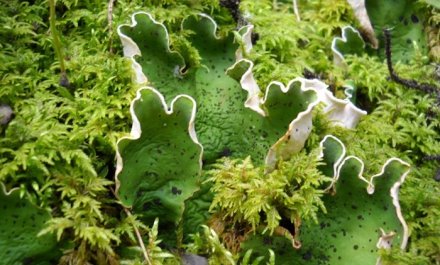- Study
- Student
- Research
- About UNAK
- University
- Schools & faculties
- Governance
- Rector
- Rector’s Office
- University Council
- University Assembly
- University Office
- Laws and regulations
- Organization
- Code of Ethics
- Councils and committees
- Strategies & policies
- On campus
- Human resource
Pseudomonas syringae in Peltigera lichens

About the project
The study of Pseudomonas syringae has expanded beyond its traditional association with crop plants to include isolation from other substrates such as river water and clouds. P. syringae is a species of gram-negative bacteria is an opportunistic pathogen that can cause disease in a wide range of plant species, including crops, ornamental plants, and trees. Given its prevalence and potential for causing global epidemics in economically important crops, understanding its behaviour in various environments is critical. Iceland, with its isolated and pristine environment, abundant vegetation, and limited agricultural areas, provides a unique opportunity to study this bacterium. In a recent project by the INRAE Institute (France) in collaboration with UNAK, multiple P. syringae were isolated from plants and moss in various habitat types throughout Iceland, revealing that these bacteria have not been mixed with the rest of the globe for the last several million years, making them unique and unknown.
In the PhD project undertake by Natalia Ramirez (NR) guided by the main author of this project Margrét Auður Sigurbjörnsdóttir (MAS) together with Oddur Vilhelmsson among others, revealed the presence of P. syringae in Iceland in lichens, with a preference for the Peltigera genus. This study also analyzed the genetic distance between populations of P. syringae on lichens, tracheophytes, and mosses at ten sampling points. The results showed that there were significant differences between sampling points but not between different plant species at the same sampling point. P. syringae densities were found to be lower in Peltigera thalli compared to moss and tracheophyte samples.
The pathogenic potential and growth in planta of Icelandic P. syringae was found to be just as high as strains responsible for global crop epidemics, posing a possible danger to Icelandic crops. This is particularly concerning given predictions of increased crop loss due to the expected rise in plant pathogens caused by climate change.
Nevertheless, the findings of this research do not imply that the bacteria or the coexistence of lichens near crops should be perceived negatively and eliminated. Despite being widespread globally, this bacterium typically does not harm its host, such as Peltigera lichens. Therefore, as scientists, our objective is to enhance our comprehension of the factors that determine the nature of this interaction to prevent any potential harmful effects.
Members
- Natalia Ramírez, Ph.D. student
- Oddur Þór Vilhelmsson, Professor
- Auður Sigurbjörnsdóttir, Associate Professor
Collaborators
- Cindy E. Morris and Odile Berge, INRAE, Avignon, France
- Robert W. Jackson, Birmingham University
- Starri Heidmarsson, Natural Research Centre of Northwest Iceland
Publications
- Natalia Ramírez, M. Auður Sigurbjörnsdóttir, Cecile Monteil, Odile Berge, Starri Heiðmarsson, Robert W. Jackson, Cindy Morris, Oddur Vilhelmsson. (2023). Pseudomonas syringae isolated in lichens for the first time: Unveiling Peltigera genus as the exclusive host. Environmental Microbiology, 2023, 1-10. DOI: 10.1111/1462-2920.16490
- Morris C.E., Ramirez N., Berge O., Lacroix C., Monteil C., Chandeysson C., Guilbaud C., Blischke A., Sigurbjörnsdóttir M.A., Vilhelmsson O. (2022) Pseudomonas syringae on plants in Iceland has likely evolved for several million years outside the reach of processes that mix this bacterial complex across Earth’s temperate zones. Pathogens 2022, 11, 357. DOI: 10.3390/pathogens11030357
- Morris, C., Berge, O., Chandeysson, C., Guilbaud, C., Monteil, C., Darwin, P., Sigurbjornsdottir, A., and Vilhelmsson, O. (2019) Linking sources and sinks in the long distance aerial dissemination of ubiquitous pathogens. Phytopathology 109, 10(S), 2. DOI: 10.1094/PHYTO-109-10-S2.1